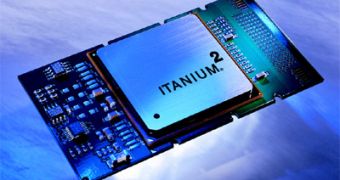Virtualization is one of the strongest development directions of the computer industry right now as it can lead to a new era of performance in data center environments while keeping running costs at a reasonable level. Because of the many good points that come with this technology, more and more hardware and software producing companies are stepping ahead and start developing support for this approach to the data center of the future.
Among the strong supporters of the virtual approach to the problems that currently plague all data centers, there are the two most important computer processor manufacturers, Intel and AMD, which are now racing to develop new technologies that could increase the performance of the applications that are run in a virtual environment. According to the news site vnunet, Intel's senior vice president for enterprise systems and solutions, Pat Gelsinger, said that the virtualization technologies are the starting point for a new ''Pat Gelsinger''. He also said that this technology will profoundly alter the ways data centers are currently viewed and the way they operate as the virtualization technologies will offer many opportunities to improve the design of such centers.
When talking about the term ''operating system'', Pat Gelsinger was not referring to a software operating system like Microsoft Windows or Linux but rather at the underlaying infrastructure layer which is the base of all data centers. In order to fully and effectively support virtualization technologies, data centers will have to alter their hardware base and offer low level support for a number of software technologies like VMWare's Vmotion and XenSource's XenMotion. The main innovation that comes with the low level virtualization support is that a virtual machine can be moved from one server system to another while running and the whole process is transparent for the software applications.
According to Pat Gelsinger, virtualization technologies could one day replace the mainframe computer systems that are much more expensive than the x86 compatible servers, but are offering a much more stable operating environment. Intel already made an attempt to step on the mainframe market and replace computing solutions like those that are built by IBM with x86 servers centered around Itanium central processing unit. Gordon Haff, a principal IT advisor with analyst firm Illuminata, has a different point of view from Intel's vice president as he says the mainframes are here to stay because not every workload can be transferred to a x86 compatible server system.
"Not all workloads lend themselves well to a distributed memory architecture [such as offered by x86 server farms]," Haff pointed out. "And there are certain advantages from a management and resource allocation perspective to having everything in one box."

 14 DAY TRIAL //
14 DAY TRIAL //